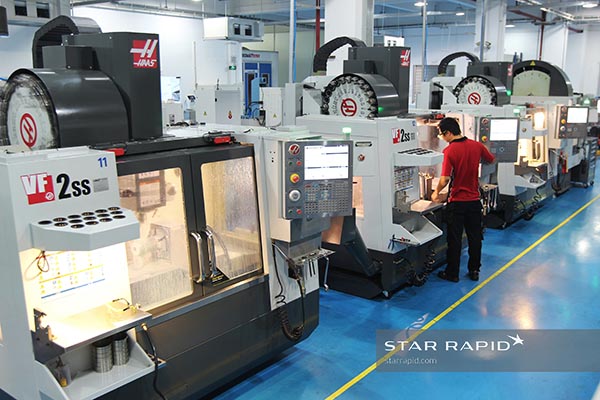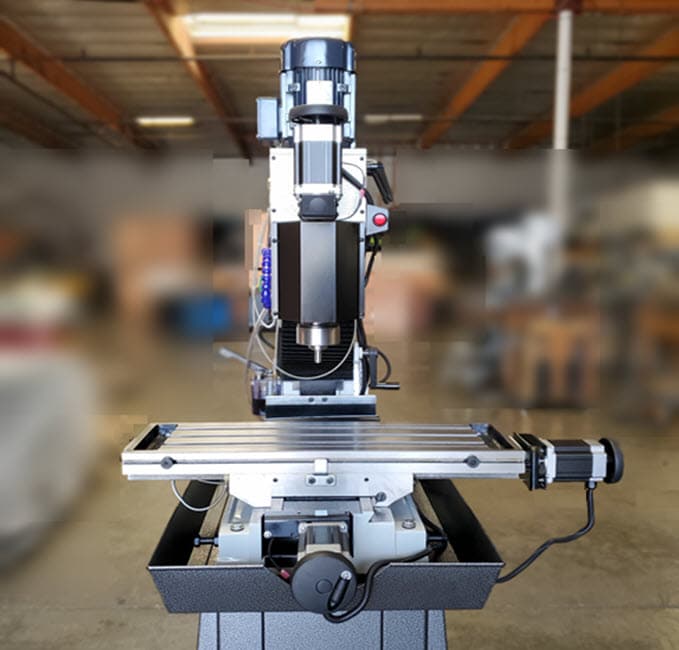Table of Contents
- Can You Mill 6061 Aluminum on Desktop CNC?
- Frequently Asked Questions
- Can 6061 Aluminum be milled on a desktop CNC machine?
- What are the recommended cutting parameters for milling 6061 Aluminum?
- What type of tooling is recommended for milling 6061 Aluminum?
- What are some tips for achieving optimal results when milling 6061 Aluminum on a desktop CNC machine?
- What are some common applications for 6061 Aluminum?
If you’re a hobbyist or a small business owner with a desktop CNC machine, you might be wondering if you can mill 6061 aluminum on it. The answer, as with many things in the world of machining, is “it depends.”
6061 aluminum is a popular material for machining because it has good strength, is easy to work with, and has good corrosion resistance. However, it can also be tricky to machine, especially on a smaller CNC machine. In this article, we’ll explore the factors that determine whether or not you can successfully mill 6061 aluminum on your desktop CNC, and offer some tips for getting the best results.
Can You Mill 6061 Aluminum on Desktop CNC?
If you are looking to mill 6061 aluminum on a desktop CNC machine, you may be wondering if it is possible. The answer is yes! With the right tools and techniques, milling aluminum on a desktop CNC can be a successful and rewarding experience. In this article, we will explore the various factors involved in milling 6061 aluminum on a desktop CNC machine.
Factors to Consider
When milling 6061 aluminum on a desktop CNC machine, there are several factors to consider. First and foremost, the type of CNC machine you are using will play a significant role in the success of your milling project. Some desktop CNC machines are better suited for milling aluminum than others, so it is essential to choose the right machine for the job.
Another factor to consider is the type of cutting tool you will be using. For milling aluminum, carbide end mills are the preferred choice due to their durability and ability to withstand high temperatures. It is also important to use a cutting tool with the appropriate number of flutes for optimal chip evacuation.
Toolpath Strategies
When it comes to toolpath strategies for milling 6061 aluminum on a desktop CNC, there are a few options to consider. One popular strategy is the adaptive clearing toolpath, which involves removing material in a series of overlapping passes. This method is efficient and can help to prevent tool wear.
Another toolpath strategy to consider is the contour toolpath. This method involves milling along the edges of the material to create a specific shape or profile. It is important to use a cutting tool with a small radius to prevent tool breakage and achieve a smooth finish.
Benefits of Milling 6061 Aluminum on Desktop CNC
There are several benefits to milling 6061 aluminum on a desktop CNC machine. One of the main advantages is the ability to create precise and intricate parts with ease. CNC machines allow for greater accuracy and repeatability than manual milling methods.
Another benefit is the speed and efficiency of the milling process. With the right tools and techniques, you can quickly and easily produce high-quality parts without the need for extensive manual labor.
VS Manual Milling Methods
Compared to manual milling methods, milling 6061 aluminum on a desktop CNC machine offers several advantages. With a CNC machine, you can achieve greater accuracy and repeatability, which is essential for producing complex parts with tight tolerances.
In addition, CNC machines are faster and more efficient than manual milling methods. With a CNC machine, you can complete milling projects in a fraction of the time it would take with manual methods.
Conclusion
In conclusion, milling 6061 aluminum on a desktop CNC machine is possible with the right tools and techniques. When considering milling aluminum on a CNC machine, it is important to choose the right machine for the job and use the appropriate cutting tools and toolpath strategies.
By taking these factors into consideration and following best practices, you can produce high-quality parts quickly and efficiently. Whether you are a professional machinist or a hobbyist, milling aluminum on a desktop CNC machine can be a rewarding and enjoyable experience.
Frequently Asked Questions
Here are some common questions regarding milling 6061 aluminum on desktop CNC machines.
Can 6061 Aluminum be milled on a desktop CNC machine?
Yes, 6061 aluminum can be milled on a desktop CNC machine. However, it is important to use the appropriate tooling, feeds, and speeds to ensure successful results. 6061 aluminum is a common material used in the aerospace, automotive, and medical industries due to its high strength-to-weight ratio and corrosion resistance.
It is recommended to use carbide tooling as it is harder and more wear-resistant than high-speed steel. Additionally, using a coolant or lubricant can help to reduce heat and prevent tool wear.
What are the recommended cutting parameters for milling 6061 Aluminum?
The recommended cutting parameters for milling 6061 aluminum will vary depending on the specific machine, tooling, and material being used. However, as a general guideline, it is recommended to use a cutting speed of 500-1000 SFM (surface feet per minute) and a feed rate of 0.005-0.010 inches per tooth. It is also important to use a coolant or lubricant to prevent overheating and tool wear.
It is important to note that these parameters are just a starting point and may need to be adjusted based on the specific application and machine being used. It is recommended to perform test cuts and make adjustments as necessary to achieve optimal results.
What type of tooling is recommended for milling 6061 Aluminum?
Carbide tooling is typically recommended for milling 6061 aluminum as it is harder and more wear-resistant than high-speed steel. Additionally, the cutting edges of carbide tools can be sharper and more precise, leading to better surface finishes and dimensional accuracy.
When selecting tooling, it is important to consider the specific application and material being used. For example, a roughing end mill may be used for material removal, while a finishing end mill may be used for achieving a smooth surface finish. It is also important to consider the number of flutes, as more flutes can provide a smoother surface finish but may also reduce chip clearance.
What are some tips for achieving optimal results when milling 6061 Aluminum on a desktop CNC machine?
Some tips for achieving optimal results when milling 6061 aluminum on a desktop CNC machine include using the appropriate tooling, feeds, and speeds, as well as using a coolant or lubricant to prevent overheating and tool wear. It is also important to properly secure the material to the machine bed to prevent movement or vibration during cutting.
Performing test cuts and making adjustments as necessary can also help to achieve optimal results. Additionally, it is important to regularly maintain and clean the machine to ensure that it is functioning properly and producing accurate results.
What are some common applications for 6061 Aluminum?
6061 aluminum is a versatile material that is commonly used in a variety of applications. It is frequently used in the aerospace, automotive, and medical industries due to its high strength-to-weight ratio and corrosion resistance. Additionally, it is often used in the construction of bicycles, boats, and other recreational equipment. 6061 aluminum can also be used for structural components, such as beams and columns, as well as for decorative purposes, such as signage and architectural features.
Overall, the use of 6061 aluminum is widespread and continues to be a popular choice for a variety of applications in multiple industries.
In conclusion, milling 6061 aluminum on a desktop CNC machine is definitely possible. It might require some adjustments to the machine’s settings and tooling, but with the right approach, you can achieve accurate and precise results.
However, before you start milling, it’s important to consider the risks associated with working with aluminum. The material can be challenging to machine, and it produces fine dust that can pose health hazards if not properly handled. Therefore, it’s crucial to take appropriate safety measures to protect yourself and those around you.
Overall, milling 6061 aluminum on a desktop CNC can be a rewarding experience, allowing you to create complex and intricate parts with ease. Just make sure to approach the process carefully, taking into account the unique properties of the material and the potential hazards involved. With practice and patience, you can master aluminum milling and unlock new possibilities for your CNC projects.
Request a quote today!
[contact-form-7 id="1578" title="Contact form"]
Please compress the file into a ZIP or RAR file before uploading. Alternatively, send through your RFQ by email.
enquires@unitymanufacture.com





